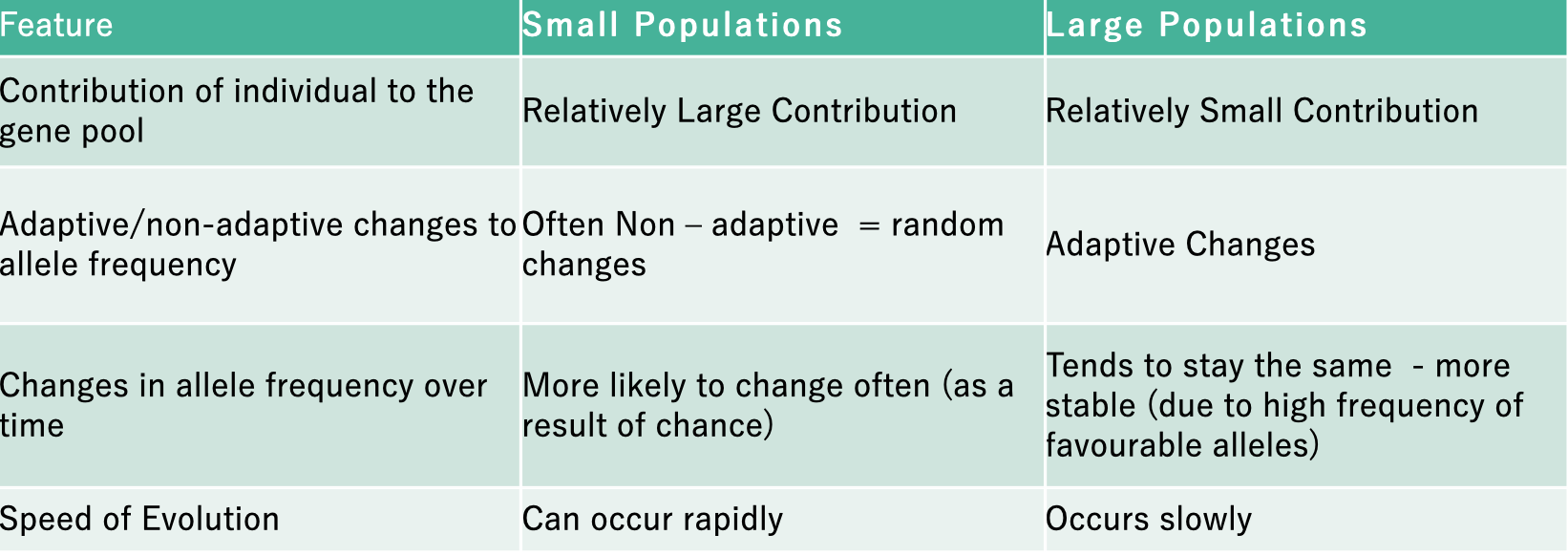Evolutionary Mechanisms
1/13
There's no tags or description
Looks like no tags are added yet.
Name | Mastery | Learn | Test | Matching | Spaced |
|---|
No study sessions yet.
14 Terms
The different processes that contribute to variation in a gene pool (need to be able to explain each):
Random assortment of chromosomes
Crossing over
Non-disjunction
Mutations [most important source]
Random Fertilisation
What is evolution?
The gradual change of a species’ characteristics over time
Gene pool & allele frequencies in different sized populations:

What is gene flow:
The movement of genetic material (alleles) from one population to another.
impact of barriers on gene flow:
populations are often kept apart by barriers that inhibit the amount of interbreeding between them and preventing gene flow.
What are the classifications of barriers to gene flow? Provide examples.
Geographical barriers - oceans, mountain ranges, large lake systems, deserts and expansive ice sheets
Socio-cultural barriers - economic status, educational background, social position, religion and language
When does natural selection occur & what impact does it have?
Occurs when nature favours one set of alleles over another. This causes major changes to the allele frequency in the gene pool of the population.
what are the observations which lead to darwin’s theory of evolution through natural selection:
Variation - All members of a species show variation/differences. These traits were passed down through generations, where the characteristics of the parents were seen in their offspring.
Birth Rate - All living things reproduce at a rate that is greater than the rate at which their food supply and other resources increases. Normally, this would result in overcrowding.
Nature’s Balance - Even though brith rate was very high, the number of individuals of each speicies remained relatively constant in the population
how do observations lead to drawin’s theory
observation lead to → struggle for existence which leads to → survival of the fittest
Survival of the fittest & its impact on gene pool - regarding organisms with favourable characteristics:
organisms with favourable characteristics survive and pass this favourable characteristic on to their offspring. This increases the allele frequency of the favourable/adaptive allele in the gene pool of the population.
Survival of the fittest & its impact on gene pool - regarding organisms with unfavourable characteristics:
organisms with the unfavourable characteristic die and are unable to pass on this characteristic. This decreases the allele frequency of the unfavourable allel in the gene pool of the population.
what is the selective agent
The environmental factor that acts on a population and determines which characteristics are favourable.
Steps of how evolution occurs through natural selection
There is variation of characteristics within a species
More offspring of a species are produced that can possibly survive to maturity.
Because of excessive birth rate and limited resources, there is a struggle for existence - competition for survival.
Individuals with characteristics best suited to the environment have more chance of surviving and reproducing - survival of the fittest.
Favourable characteristics (those with survival value) are passed on to the next generation
In the gene pool, the proportion of alleles that produce favourable characteristics gradually increases
provide human examples of natural selection:
pigmentation of skin
sickle-cell anaemia (heteroxygotic advantage in africa)